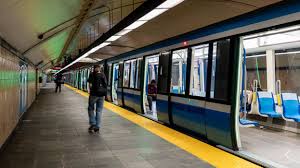Latest TTC Developments: A Look at Toronto’s Transit Commission

Introduction
The Toronto Transit Commission (TTC) serves as the backbone of public transportation in Toronto, facilitating the commute of millions of passengers each year. With the ongoing changes in city infrastructure and an emphasis on sustainability, understanding the latest developments within the TTC is critical for users, planners, and policymakers. As the population continues to grow and urban areas expand, the significance of reliable public transit becomes increasingly evident.
Recent Developments
As of October 2023, the TTC has announced several initiatives aimed at improving services and expanding accessibility. In response to ongoing user feedback and operational challenges, the Commission has rolled out a new smartphone app that provides real-time tracking and service alerts, enhancing user experience by keeping transit riders informed at all times. This app features user-friendly interfaces, making it easier for individuals, including those with disabilities, to navigate the system.
Additionally, the TTC is in the early stages of launching two new light rail lines: the Eglinton Crosstown and the Finch West LRT. These projects aim to reduce congestion on major streets and provide faster transit options for various neighborhoods. The Eglinton Crosstown is set to open in 2024, promising improved connections across the city with an estimated ridership increase of over 5,000 passengers per day.
Challenges and Future Plans
Despite these positive strides, the TTC continues to grapple with staffing shortages that have impacted service delivery. The Commission has launched a recruitment campaign to hire more operators and support staff to ensure smooth operations across the transit system.
Moreover, the TTC is focused on sustainability with plans to expand its electric bus fleet, striving for a greener environment. By 2030, the Commission aims to convert its entire fleet to zero-emission buses, aligning with Toronto’s broader goal of reducing greenhouse gas emissions. As part of this initiative, local governments are working collaboratively to secure funding and support for infrastructural developments that facilitate this transition.
Conclusion
As public transportation continues to evolve in Toronto, the TTC plays a pivotal role in shaping the city’s future. Recent improvements in technology, infrastructure, and sustainability initiatives demonstrate the Commission’s commitment to enhancing transit experiences for all users. The ongoing challenges of staffing and budget constraints will require focused strategies to ensure that the TTC can meet the growing demands of a bustling urban environment. For commuters in Toronto, staying informed about these developments is crucial for navigating their daily transit efficiently.









